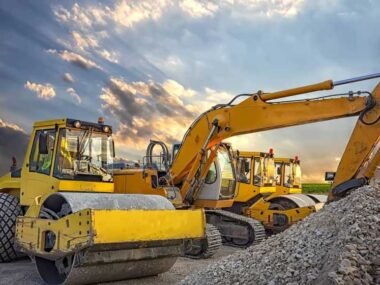When it comes to large construction projects, efficiency and precision are everything. Traditional methods of joining reinforcement bars (rebar) can be time-consuming and labor-intensive, leaving you wondering if there’s a better way. Enter laser welding—a technology that promises faster, cleaner, and more precise results. But is it practical for large-scale builds?
In this article, you’ll explore the potential of laser welding for rebar, weighing its benefits, challenges, and overall feasibility. Whether you’re a contractor, engineer, or simply curious about advancements in construction, you’ll gain valuable insights into how this modern approach could reshape the industry.
Understanding Laser Welding Technology
Laser welding uses concentrated light energy to join materials without physical contact, creating precise, high-quality welds. This technique has gained attention for applications involving intricate or high-volume tasks.
What Is Laser Welding?
Laser welding employs a high-intensity laser beam to melt and fuse materials, forming a strong joint. It’s a highly automated process where parameters like beam intensity and duration control weld quality. Laser welding relies purely on light energy, unlike traditional welding, which uses electrodes or filler materials.
There are several types, including keyhole and conduction mode welding. Keyhole welding penetrates deeper, making it suitable for thicker materials. Conduction mode welds near the surface and is often used for thinner layers. Both modes can serve different roles, depending on your project requirements.
An industrial laser welder can support either welding method with high precision, making it suitable for large-scale manufacturing where quality and repeatability are essential.
Laser welding systems may also integrate with computer numerical control (CNC) setups for enhanced precision. Industries like aerospace and automotive benefit from this accuracy to address complex designs.
Advantages Over Traditional Welding Methods
Using laser welding instead of conventional techniques offers several benefits:
Precision
Lasers deliver pinpoint accuracy, allowing finer welds that reduce defects and material distortion. Traditional welding methods may struggle to match this level of control.
Speed
Laser welding can complete joints faster, which reduces operational delays. For example, high-powered lasers can weld linear sections of rebar in a fraction of the time needed for manual arc welding
Non-Contact Nature
No physical interaction between the tool and material minimizes wear and tear, which in turn reduces maintenance costs over time.
Versatility
Laser systems accommodate diverse materials and geometries, from steel to alloys. In contrast, traditional methods often require specific setups depending on material compatibility.
Minimal Heat-Affected Zones (HAZ)
The focused beam generates less heat, preserving properties in surrounding areas. This is critical for maintaining the structural integrity of steel rebar.
These advantages make laser welding a promising option for applications demanding efficiency and consistency. However, understanding its limitations, like higher investment costs, is equally essential to determine feasibility for large-scale builds.
Challenges of Welding Reinforcement Bars with Lasers
Adopting laser welding for joining reinforcement bars introduces certain complexities, particularly in large-scale construction scenarios. While this method offers precision and speed, specific challenges limit its broader application.
Material Considerations for Reinforcement Bars
Variable carbon content in rebar can cause cracking or brittleness under laser heat, while surface contaminants like rust or mill scale hinder absorption and require cleaning. Furthermore, irregular diameters complicate alignment, and larger bars need higher beam energy to enlarge the heat-affected zone.
Technical Limitations in Large-Scale Applications
Laser welding rebar at scale demands precise, time-consuming setup and costly automation, risks distortion in thinner sections, depends on high-power units that strain on-site electricity, and lacks extensive long-term durability testing to verify performance under heavy or dynamic loads.
Benefits of Laser Welding for Large Builds
Modern construction methods increasingly look to technologies that enhance efficiency without compromising quality. Laser welding presents several advantages for large-scale builds, particularly in joining reinforcement bars.
Enhanced Precision and Strength
Laser welding offers a level of exactness that is difficult to achieve with traditional methods. Concentrating light energy at specific points produces cleaner welds, reducing imperfections like spatter or uneven joins. This precision strengthens the bond, critical for large builds where structural integrity is non-negotiable.
For instance, laser technology maintains consistent energy application when welding high-strength steel rebar. Unlike manual welding, which depends on operator skill, laser systems deliver repeatable results. Tight control over heat input reduces risks like cracks or distortion, even in rebar with varied diameters.
Enhanced precision also minimizes the size of weld zones, preserving the mechanical properties of the surrounding material. This is particularly important in high-stress structures, such as bridges or high-rise buildings, where the reinforcement must sustain dynamic loads without failing.
Reduction in Welding Time and Costs
Speed is a key advantage of laser welding compared to arc welding processes. Automated systems can join sections within seconds, which becomes a significant advantage when working with hundreds or thousands of rebar segments.
The non-contact nature of laser welding further contributes to efficiency. There’s no need for consumables like filler materials, reducing time and material requirements. Although setup costs may be higher initially, reduced labor and faster workflows often offset this in large projects.
Denaliweld systems are designed to maximize these benefits—automated laser solutions that streamline production without compromising quality. For example, Denaliweld laser systems in a factory environment can weld prefabricated rebar cages far more rapidly than site-based alternatives. When combined with lower maintenance demands for laser equipment compared to traditional machinery, the cost-effectiveness scales with the size of the build.
| Category | Laser Welding | Traditional Welding
|
|---|---|---|
| Precision | High | Moderate |
| Speed per Joint | 1-2 seconds | 10-20 seconds |
| Consumable Usage | Minimal | High |
| Heat Affected Zone (HAZ) | Small | Large |
Comparing Laser Welding to Conventional Techniques
Laser and traditional welding methods achieve the same goal: joining reinforcement bars. However, their processes, results, and practicality differ significantly depending on the project’s size and complexity.
| Comparison Metric | Laser Welding | Conventional Welding
|
|---|---|---|
| Initial Costs | High | Low |
| Long-term Costs | Lower (no consumables) | Higher (labor, consumables) |
| Speed | Faster (seconds per joint) | Slower (minutes per joint) |
| Portability | Lower | Higher |
| Weld Consistency | High | Moderate |
| Proven Durability | Limited data | Decades of data |
Could the higher cost of laser welding justify its efficiency and durability for your projects? It depends on the specific scale, environment, and specifications you prioritize.
Future Prospects and Industry Adoption
Adopting laser welding for reinforcement bars in large-scale construction isn’t yet widespread. However, advancements in technology and evolving construction needs suggest possibilities worth exploring.
Advances in Laser Welding Technology
- Modern fiber lasers deliver high-quality beams, stay energy-efficient, and weld a wide range of metals, including complex rebar alloys.
- Robotic systems with real-time seam-tracking sensors automatically correct misalignment and cut errors in large builds.
- Multi-kilowatt laser units join thick rebar without sacrificing weld consistency, enabling high-strength connections over long spans.
- Rugged, mobile laser platforms extend precise welding from factory floors to on-site and prefabrication environments.
Potential Use Cases in Large Construction Projects
- Automated laser welding quickly assembles dense rebar grids for high-rise structures.
- Consistent laser welds strengthen bridge joints subjected to repetitive stress.
- Factory laser systems accelerate the production of modular rebar cages without losing alignment.
- Laser-welded rebar resists seismic shear forces, though more long-term testing is needed.
- Broader adoption depends on further cost reductions and field experimentation.
Conclusion
Laser welding holds significant potential for transforming how reinforcement bars are joined in large-scale construction. Its ability to deliver precision, speed, and cleaner welds makes it an attractive option for projects where efficiency and structural integrity are critical.
While challenges like initial costs, material variability, and scaling complexities exist, advancements in laser technology and automation are steadily addressing these hurdles. Laser welding could deliver long-term benefits for those willing to invest in innovation that outweigh its upfront expenses, especially in large or repetitive builds.
As construction demands evolve, exploring cutting-edge solutions like laser welding can position you at the forefront of industry advancements. Whether you’re tackling high-rise buildings or infrastructure projects, this technology offers a compelling opportunity to enhance quality and productivity.










